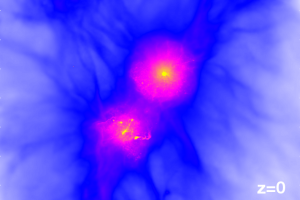For IAU Symposium 311, I have prepared an augmented reality poster using DARO. The augmented reality elements will work if the poster is viewed on your screen just like the printed poster.
If you have just scanned the QR code using your phone, but you are reading this message, you probably have not installed the DARO viewer yet. Please speak to me at the IAU meeting – I’ll be happy to lend you my tablet. Alternatively, you can download the latest version of DARO for your phone from the DARO project website:
DARO is developed by Jascha Schewtschenko at Durham University. By downloading and installing DARO, you agree to its license. In the future, please always visit the project website for the latest version.




